lab SERVICES
Get the knowledge to ask the right questions. To feel confident in yourself. Confident in what you give.
To make sure that you're getting the best diamond for your money.
SOURCE VERITAS
Wikipedia's definition of Corporate Social Responsibility is: "a concept whereby organizations consider the interests of society by taking responsibility for the impact of their activities on customers, suppliers, employees, shareholders, communities and other stakeholders, as well as the environment. This obligation is seen to extend beyond the statutory obligation to comply with legislation and sees organizations voluntarily taking further steps to improve the quality of life for employees and their families as well as for the local community and society at large."
GCAL, through the years, has always had an awareness for what the implications of diamond mining would have on the local environment and its' people. Through its’ association with CIBJO, GCAL has sponsored initiatives to fund the education of children in the African nations where diamond mining occurs.
With the introduction of Source Veritas (Truth in Source), a patent pending process that utilizes Gemprint® identification technology, GCAL became the world's first grading lab to issue a diamond certificate that gives assurance of safe, legitimate sourcing, as well as distribution, of diamonds. Consumers purchasing a GCAL Source Veritas diamond can buy with the confidence of safe sourcing.
Consumers can buy the diamond of their dreams knowing the purchase is making a difference in someone's life half way around the world. While your diamond sparkles and signifies the hopes for your future, it also represents a ray of hope to those in under developed African nations where diamonds are a means to a better life. Enjoy your GCAL Certified Source Veritas diamond - knowing your purchase made a difference.

We have developed a reasonable, cost effective, and secure tracking and identification system for precious metals, diamonds, and gemstones.
The process encompasses patented technologies that both implement a DNA marking and tracking system and multi-level security protocols marking rough diamonds at the mines, and Gemprint Fingerprint Technology for identifying polished diamonds after the cutting process
The process will allow rough diamonds to be easily identifiable in the marketplace as coming from a specific country or mine.
Simply put, the Chain of Custody is the unbroken path a product takes from the first stage in the supply chain, through to the end customer as a finished product, including raw commodity materials, conversion, transformation, distribution/ logistics.
'Growth' in the industry of CoC is being driven by increasing consumer demand on product origin
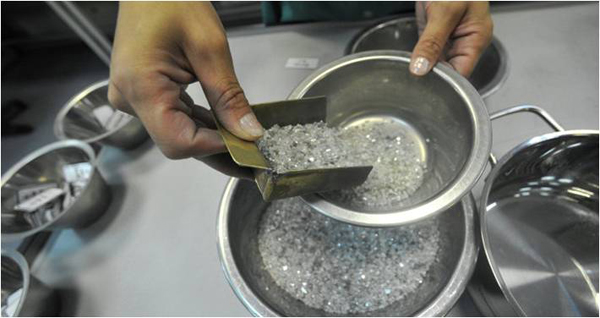
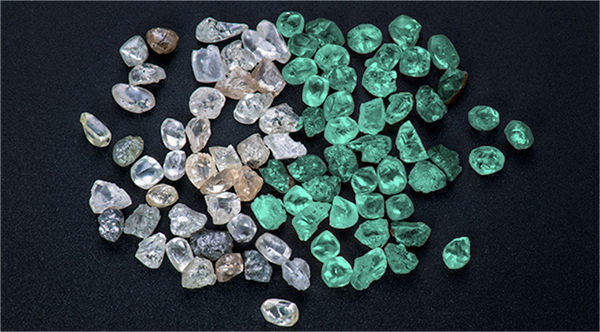
Core Elements of the Program.
Assess vulnerabilities and key control points
Product Identification
Record Keeping
Responsibility and Accountability
Audit function
Integration within Supply Chain
The DNA Matrix
High security anti-counterfeiting mark, that cannot be reverse engineered or duplicated
Embedded in a transparent ink solution that can be printed on most tangible substrates
Covert or overt mark, detectable with specially calibrated readers for "in the field" verification
Forensic Detection
Extraction and matching of DNA sequence code n authorized lab facility
Irrefutable proof/ positive identification, admissible in a court of law
1 in 33 trillion chance of breaking the code

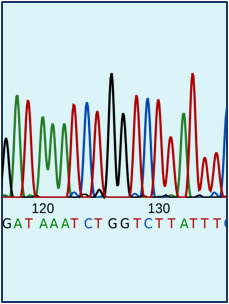 DNA Sequence Origination
DNA Sequence Origination Ink and SmartDye Formulation
Ink and SmartDye Formulation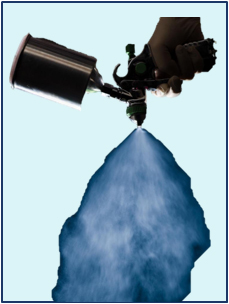 Spray/Mark Rough Diamonds
Spray/Mark Rough Diamonds Verification Protocols at Cutter
Verification Protocols at Cutter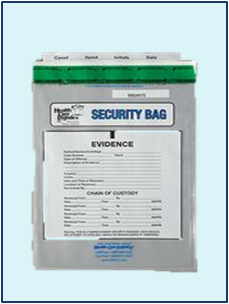 Random Sampling Program
Random Sampling Program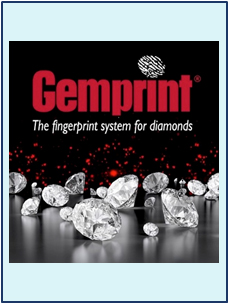 Gemprint Diamonds for Market
Gemprint Diamonds for Market
The downstream, diamond pipeline benefits are endless.
The manufacturer benefits are:
- Chain of Custody Compliance
- Inventory Control
- Jewelers Block Insurance Discounts for entire inventory on GP International Database
- Recovery of lost or stolen inventory
The diamond dealer benefits are:
- Continued Chain of Custody Compliance
- Inventory Control
- Prevent stone switching from returned memos
- Jewelers Block Insurance Discounts for entire inventory on GP International Database
- Recovery of lost or stolen inventory
The retail jeweler benefits are:
- Chain of Custody Compliance Guarantee
- Inventory Control
- Prevent inventory mix ups
- Collateral Bank Audits made affordable
- Will detect most diamond imitations (simulants like CZ, Moissanite, etc loose or mounted)
- Register Gemprint in consumers name for a charge
- Jewelers Block Insurance discounts for entire inventory in International GP Database
- Avoid repair counter doubts. Register customer’s diamond at repair take-in. Verify when customer picks up. Add a fee additional to the repair.
- Banks and Auditors ease of auditing inventory. Reduces the need for an expensive expert. Anyone can be trained to operate the instrument without gemological expertise.
- Provide peace of mind to your customer. Help your clients protect one of their most prized assets.
- Enhanced Asset Management. Easy to use, gravity-fed alignment.
The consumer benefits are:
- Peace of mind. Their diamond can be positively identified, out of many thousands.
- Most insurance companies provide a 5% to 10% policy discount on Gemprinted diamonds.
- Can manage their own password protected account, transfer ownership, report lost or stolen diamonds.
- Proven chain of custody – knowing their diamond did not fuel conflict.
CONCLUSION
Source Veritas™, as described with UV/DNA liquid coatings for rough diamonds and Gemprint® for polished diamonds, integrated into elements of the Kimberley Process Certification Scheme can create "an auditable chain of custody" from mine to market at minimal cost and effort throughout the pipeline. This system can work for gemstones, diamonds, and precious metals.





